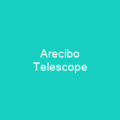What is a Telescope and How Does It Work?
A telescope is more than just a tool to gaze at the stars; it’s like a window into the universe, allowing us to peer through time and space. Imagine holding a magnifying glass that can see beyond our planet—this is what a telescope does! Originally an optical instrument using lenses and mirrors, today’s telescopes have evolved to detect different regions of the electromagnetic spectrum, from radio waves to gamma rays.
The Evolution of Telescopes
Back in the 17th century, the first practical telescopes were refracting telescopes with glass lenses. These early instruments were invented in the Netherlands and quickly revolutionized our understanding of the cosmos. Reflecting telescopes soon followed, offering a new way to observe distant objects by using mirrors instead of lenses.
As technology advanced into the 20th century, so did the types of telescopes. New inventions like radio and infrared telescopes opened up entirely new vistas for astronomers. The word ‘telescope’ itself comes from the Greek words meaning ‘far’ and ‘to look,’ coined by Giovanni Demisiani in 1611.
Types of Telescopes
The first existing record of a telescope was a 1608 patent submitted by Hans Lipperhey. Galileo built his own version in 1609, and Isaac Newton developed the first practical reflecting telescope. Advances in technology led to shorter refracting telescopes and larger reflecting telescopes, allowing us to explore deeper into space.
Today, telescopes can work across various wavelengths, including radio and gamma-rays. Due to atmospheric limitations, X-ray and far-infrared ground-based telescopes are not feasible, but space-based telescopes like Hubble, Spitzer, Kepler, and James Webb offer advantages by passing through the atmosphere and interstellar gas and dust clouds.
How Telescopes Collect Light
The way astronomers collect light in different frequency bands is fascinating. As wavelengths become longer, it becomes easier to use antenna technology to interact with electromagnetic radiation. The near-infrared can be collected much like visible light; however, in the far-infrared and submillimetre range, telescopes can operate more like a radio telescope.
Telescopes such as the Spitzer Space Telescope and the Hubble Space Telescope with Wide Field Camera 3 use reflecting optics to observe in the frequency range from about 0.2 μm (ultra-violet) to 1.7 μm (infrared light). With photons of shorter wavelengths, glancing-incident optics are used instead.
Classifying Telescopes
Telescopes can be classified by location: ground telescope, space telescope, or flying telescope. They may also be operated by professional astronomers or amateur astronomers. Radio telescopes collect microwave radiation and can pass through atmosphere and interstellar gas and dust clouds, used by SETI and Arecibo Observatory to search for extraterrestrial life.
Infrared and visible light telescopes gather information from the electromagnetic spectrum, increasing the angular size of distant objects and their brightness. Ultraviolet, X-ray, and gamma ray telescopes require special technology due to Earth’s atmosphere absorbing most of these wavelengths.
Conclusion
A telescope is a marvel of human ingenuity, allowing us to explore the vastness of space in ways unimaginable just centuries ago. From the first practical refracting telescopes to today’s advanced space-based instruments, each type of telescope opens new doors to understanding our universe. As technology continues to evolve, so too will our ability to see beyond what we can imagine.

You want to know more about Telescope?
This page is based on the article Telescope published in Wikipedia (retrieved on February 24, 2025) and was automatically summarized using artificial intelligence.





